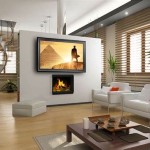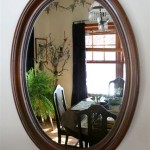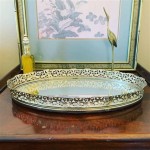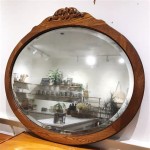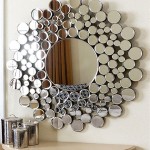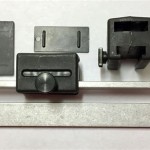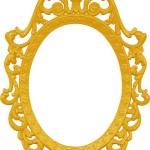Exploring the Aesthetics and Practicality of Drop Ceiling Mirror Tiles
Drop ceiling mirror tiles offer a unique approach to interior design, combining the functionality of a suspended ceiling with the visual appeal of mirrors. These tiles, typically square or rectangular, are designed to fit into standard drop ceiling grid systems, providing an easy and relatively inexpensive way to enhance the perceived space and light within a room. Their reflective surface creates an illusion of a larger area, making them popular in smaller rooms, basements, or commercial spaces aiming to maximize visual impact.
The concept of drop ceilings, also known as suspended ceilings, originated as a practical solution for concealing building infrastructure such as ductwork, pipes, and wiring. Traditional drop ceilings often utilize mineral fiber tiles or other materials that offer acoustic absorption and fire resistance. Mirror tiles, however, prioritize aesthetic enhancement, offering a dramatically different visual experience compared to conventional ceiling materials.
The installation process for drop ceiling mirror tiles is generally straightforward, mirroring the installation of standard drop ceiling tiles. The existing grid system, consisting of interlocking metal rails suspended from the main ceiling structure, provides the framework into which the mirror tiles are placed. This modular system allows for easy removal and replacement of individual tiles, facilitating maintenance and access to the infrastructure concealed above the ceiling plane.
Despite their aesthetic advantages, drop ceiling mirror tiles present certain considerations regarding material properties, installation specifics, and ongoing maintenance. Understanding these aspects is crucial for making informed decisions about their suitability for a given application.
Key Point 1: Material Composition and Reflectivity
Drop ceiling mirror tiles are typically constructed from one of two primary materials: glass or acrylic. Glass mirror tiles offer superior reflectivity and a more authentic mirror appearance. They are produced by applying a reflective backing to a sheet of glass, resulting in a crisp and accurate reflection. However, glass is a heavier and more brittle material, making it more susceptible to breakage during handling and installation. Furthermore, the weight of glass tiles may necessitate a more robust grid system, particularly in larger installations.
Acrylic mirror tiles, on the other hand, are significantly lighter and more flexible than their glass counterparts. This makes them easier to handle and less prone to breakage. Acrylic's impact resistance is also higher than glass, which can be a significant advantage in areas with high traffic or potential for accidental impact. The reflective surface of acrylic tiles is created by applying a reflective coating to a sheet of acrylic plastic. While acrylic provides a satisfactory reflective surface, it typically does not achieve the same level of clarity and true reflection as glass. Over time, acrylic can also be more susceptible to scratching and warping, potentially affecting the overall appearance of the ceiling.
The choice between glass and acrylic mirror tiles depends on a balance of factors, including budget, aesthetic preferences, structural considerations, and the anticipated level of wear and tear. Glass tiles offer superior reflectivity and a more luxurious appearance, while acrylic tiles provide greater durability and ease of handling.
The quality of the reflective coating also plays a crucial role in the overall performance of drop ceiling mirror tiles. A high-quality coating will resist peeling, fading, and discoloration, ensuring a long-lasting and aesthetically pleasing reflective surface. The application process for the reflective coating is also important; a uniform and consistent application will minimize distortions and imperfections in the reflected image.
Key Point 2: Installation Considerations and Safety
The installation of drop ceiling mirror tiles requires careful attention to detail, particularly with glass tiles due to their fragility. Safety precautions, such as wearing gloves and eye protection, are essential to prevent injuries from broken glass or sharp edges. The grid system must be level and properly aligned to ensure that the mirror tiles are installed evenly and without gaps.
Prior to installation, the existing drop ceiling grid should be inspected for any signs of damage or weakness. Sagging or bent grid members can compromise the stability of the ceiling and potentially lead to tile breakage. If necessary, damaged sections of the grid should be repaired or replaced before installing the mirror tiles.
When handling glass mirror tiles, it is important to use caution to avoid scratching or chipping the reflective surface. Tiles should be lifted and positioned carefully within the grid system, avoiding any unnecessary pressure or impact. The use of suction cups designed for handling glass can be helpful in preventing damage and ensuring a secure grip.
Acrylic mirror tiles, being lighter and more flexible, are generally easier to install than glass tiles. However, it is still important to handle them with care to avoid scratching or bending the material. The protective film that is typically applied to the surface of acrylic tiles should be removed only after the tiles are in place to prevent damage during installation.
In both cases, proper ventilation is important during installation, particularly if any adhesives or sealants are used. The manufacturer's instructions should be carefully followed regarding the application and curing of these materials.
Seismic considerations are also relevant, especially in regions prone to earthquakes. The drop ceiling grid system should be designed to withstand seismic forces and prevent the mirror tiles from falling during an earthquake. This may involve the use of seismic clips or other specialized hardware to secure the tiles to the grid.
Key Point 3: Maintenance and Long-Term Performance
Drop ceiling mirror tiles require regular cleaning to maintain their reflective properties and prevent the accumulation of dust and grime. The frequency of cleaning will depend on the environment of the room; areas with high levels of dust or humidity may require more frequent cleaning.
The cleaning method should be appropriate for the material of the mirror tiles. Glass tiles can be cleaned with a standard glass cleaner and a soft cloth. Avoid using abrasive cleaners or scouring pads, as these can scratch the reflective surface. Acrylic tiles require special care, as some cleaning products can damage or cloud the plastic. It is recommended to use a cleaner specifically designed for acrylic surfaces, along with a soft, lint-free cloth.
Over time, even with regular cleaning, drop ceiling mirror tiles may experience some degradation in their reflective properties. This can be due to scratching, warping, or discoloration of the reflective coating. The lifespan of the tiles will depend on the quality of the materials used and the environmental conditions of the room.
Acrylic is known to potentially "off-gas" over time, which translates into a slight chemical odor. Glass tiles do not have this problem and can last much longer than acrylic tiles. Choosing a higher quality acrylic product could alleviate the problem of potential off-gassing.
Individual tiles that become damaged or worn can be easily replaced, thanks to the modular nature of the drop ceiling system. This allows for targeted maintenance and prevents the need to replace the entire ceiling.
The long-term performance of drop ceiling mirror tiles is also influenced by the overall condition of the drop ceiling grid system. Regular inspection and maintenance of the grid are essential to ensure that the tiles remain properly supported and aligned. Sagging or damaged grid members should be repaired or replaced promptly to prevent potential problems.
The choice of lighting used in conjunction with drop ceiling mirror tiles can significantly impact the overall aesthetic. Indirect lighting, such as recessed lighting or cove lighting, can create a soft and diffused reflection, enhancing the sense of space and creating a more inviting atmosphere. Direct lighting, on the other hand, can create harsh reflections and glare, which may be undesirable in some settings. Careful consideration should be given to the type and placement of lighting to achieve the desired visual effect.

Mirror Tile Silver

Mirror Ceiling Tile

Strong Mirror Ceiling Tiles For High End Reflective Isc

Strong Mirror Ceiling Tiles For High End Reflective Isc

Glassless Mirror Ceiling Tiles En Pointe Enterprises

How To Use Decorative Mirror Tiles In Interior Design Ceiling Bedroom Decor

Aluminum Framed Mirror Drop Ceiling Tiles 3 D Texture Indoor

Aluminum Framed Mirror Drop Ceiling Tiles 3 D Texture Indoor

Mirror Ceiling Tile

Mirror Ceilings To Add Another Dimension Adorable Homeadorable Home

